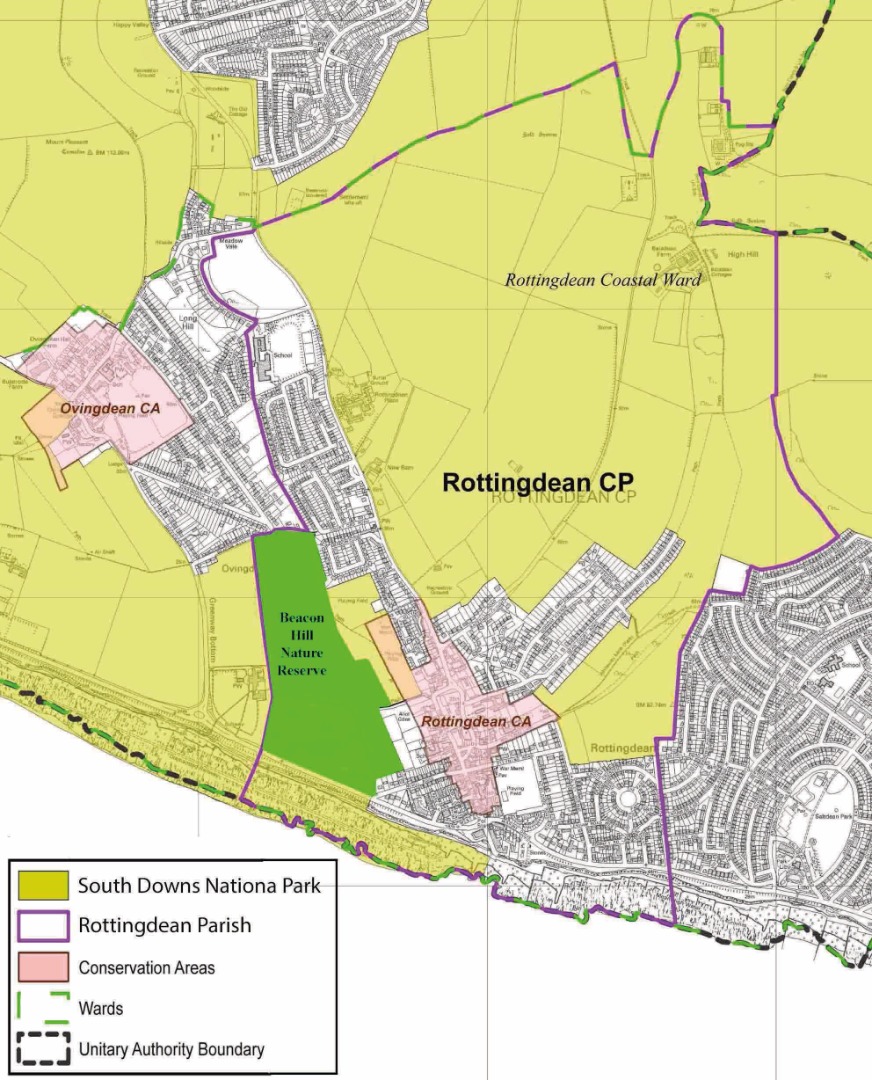Beacon Hill Nature Reserve (to the west of Rottingdean)
Beacon Hill Map

Beacon Hill Nature Reserve Stewardship Group
The Beacon Hill Nature Reserve is owned and managed by Brighton & Hove City Council. The Beacon Hill Nature Reserve Stewardship Group are responsible for assisting with the production of current and future Management Plans. This Group includes representatives from the Parish Council, the City Council’s Countryside department, the Rottingdean Preservation Society, Ovingdean residents and Preservation Society, the allotments and our specialist recorders. See the Parish Council Standing Orders Section 5 Beacon Hill Nature Reserve Stewardship
Reports:
Beacon Hill Report 2023
Beacon Hill Stewardship Group 2023 AGM Minutes
Beacon Hill Report 2022
Beacon Hill Stewardship Group 2022 AGM minutes
Beacon Hill Stewardship Group 2021 AGM minutes
Beacon Hill Nature Reserve Report 2020
Beacon Hill Stewardship Group 2020 AGM minutes
Beacon Hill Annual Report 2019
See minutes of 2018 AGM & public meeting 14 September 2018
Beacon Hill Annual Report 2019
Beacon Hill - Summer 2019 newsletter
Beacon Hill summer 2019 newsletter
Beacon Hill Spring 2019 newsletter
Beacon Hill was created a Local Nature Reserve (LNR) in 2004 and will fall within the South Downs National Park (the white area bounded by a red line on the above map). The management of this nature reserve is primarily to protect the habitat of the endangered skylarks by supporting a range of plants and butterflies associated with chalk grassland, as well as controlling areas of scrub and investigating archaeological features. Rottingdean’s windmill, which was erected in 1803, is within the boundary of the nature reserve. In 2005, Beacon Hill won the Royal Horticultural Society’s (RHS) Britain in Bloom Conservation & Environment award, and in 2007, the RHS Bloomin’ Wild Discretionary award.
The nature reserve is an area of traditional downland, also known as chalk grassland, designated as typical CG2A specification, which is a priority European habitat. Chalk grassland is the product of centuries of sheep grazing. However, with changes in agricultural practices, most of these areas have disappeared while those that remain have often become isolated and neglected.
Without proper management, the remaining chalk grassland will slowly deteriorate as nutrient levels build up favouring coarser species of grasses plus hawthorn, blackthorn, nettles, brambles etc at the expense of wildflowers such as vetchs and thyme. There is also a large colony of Round Headed Rampion. This plant is specific to Sussex and is known as the Pride of Sussex.
'/%3E%3Cpolygon points='0,0 200,0 200,200' fill='rgb(245,245,250)'/%3E%3C/svg%3E)
